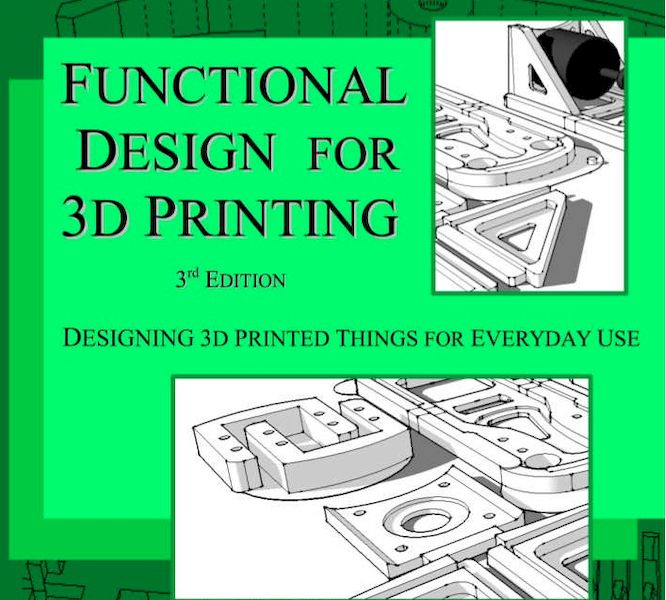
This week’s selection is the highly practical “Functional Design for 3D Printing” by Clifford Smyth.
Smyth explains the philosophy behind his treatment in his introduction:
FUNCTIONAL DESIGN FOR 3D PRINTING is written as a practical design guide for implementing useful, practical objects using fused filament desktop manufacturing. This is not an in-depth engineering study of fused filament manufacturing, but rather a practical, hands-on treatment of the many engineering and design details specific to the 3D printing of useful objects.
This is quite a bit different than most introductory 3D Printing books, and in fact Smyth explains this is actually not an introduction to the technology. It’s more of a “what you really need to know” book.
That resonates with me, as I recall my early experiments and always wished there was a knowledgable person at my side making suggestions on what would work and what might not.
I should note that this is the third edition of the book, which has proved popular and highly rated among readers.
Smyth’s book begins as most do, with a basic explanation of the technology, with a good focus on several aspects that are critical to 3D printing success, including infill, support structures and even permeability.
Smyth goes on to investigate several very common challenges in 3D printing that frequently cause 3D print failures, including poor bed adhesion, missing supports, bridges, and object orientation.
After he’s established the basics, Smyth then goes deep on the meat of the book, looking deeply at “Design for Strength”, where he explains several common engineering and design aspects affecting strength and how you can leverage them in 3D printing.
The book continues with an investigation of how to properly make fastenings and moving parts of several types, including hinges and latches.
When first obtaining a 3D printer, it’s easy to 3D print single models, or collections for assembly. But designing your own models that include motion or function is quite a different matter, especially if you have limited training in engineering and design.
But don’t fear, Smyth’s book may get you started.
Via Amazon

